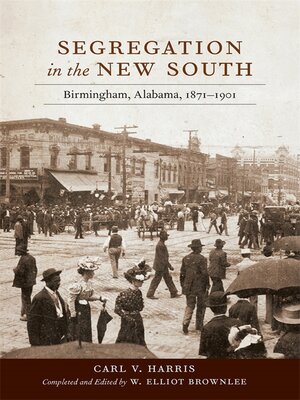
Sign up to save your library
With an OverDrive account, you can save your favorite libraries for at-a-glance information about availability. Find out more about OverDrive accounts.
Find this title in Libby, the library reading app by OverDrive.



Search for a digital library with this title
Title found at these libraries:
| Library Name | Distance |
|---|---|
| Loading... |
Carl V. Harris's Segregation in the New South, completed and edited by W. Elliot Brownlee, explores the rise of racial exclusion in late nineteenth-century Birmingham, Alabama. In the 1870s, African Americans in this crucial southern industrial city were eager to exploit the disarray of slavery's old racial lines, assert their new autonomy, and advance toward full equality. However, most southern whites worked to restore the restrictive racial lines of the antebellum South or invent new ones that would guarantee the subordination of Black residents. From Birmingham's founding in 1871, color lines divided the city, and as its people strove to erase the lines or fortify them, they shaped their futures in fateful ways.
Social segregation is at the center of Harris's history. He shows that from the beginning of Reconstruction southern whites engaged in a comprehensive program of assigning social dishonor to African Americans—the same kind of dishonor that whites of the Old South had imposed on Black people while enslaving them. In the process, southern whites engaged in constructing the meaning of race in the New South.







